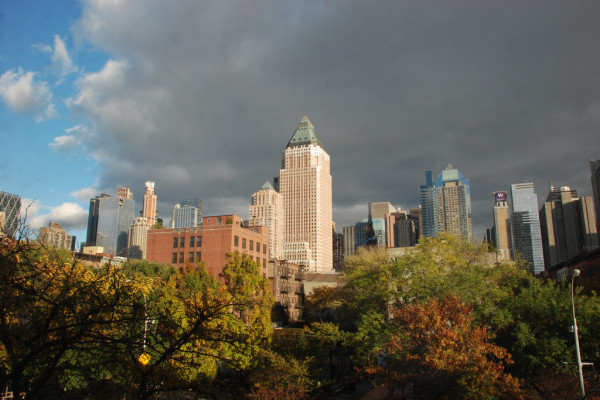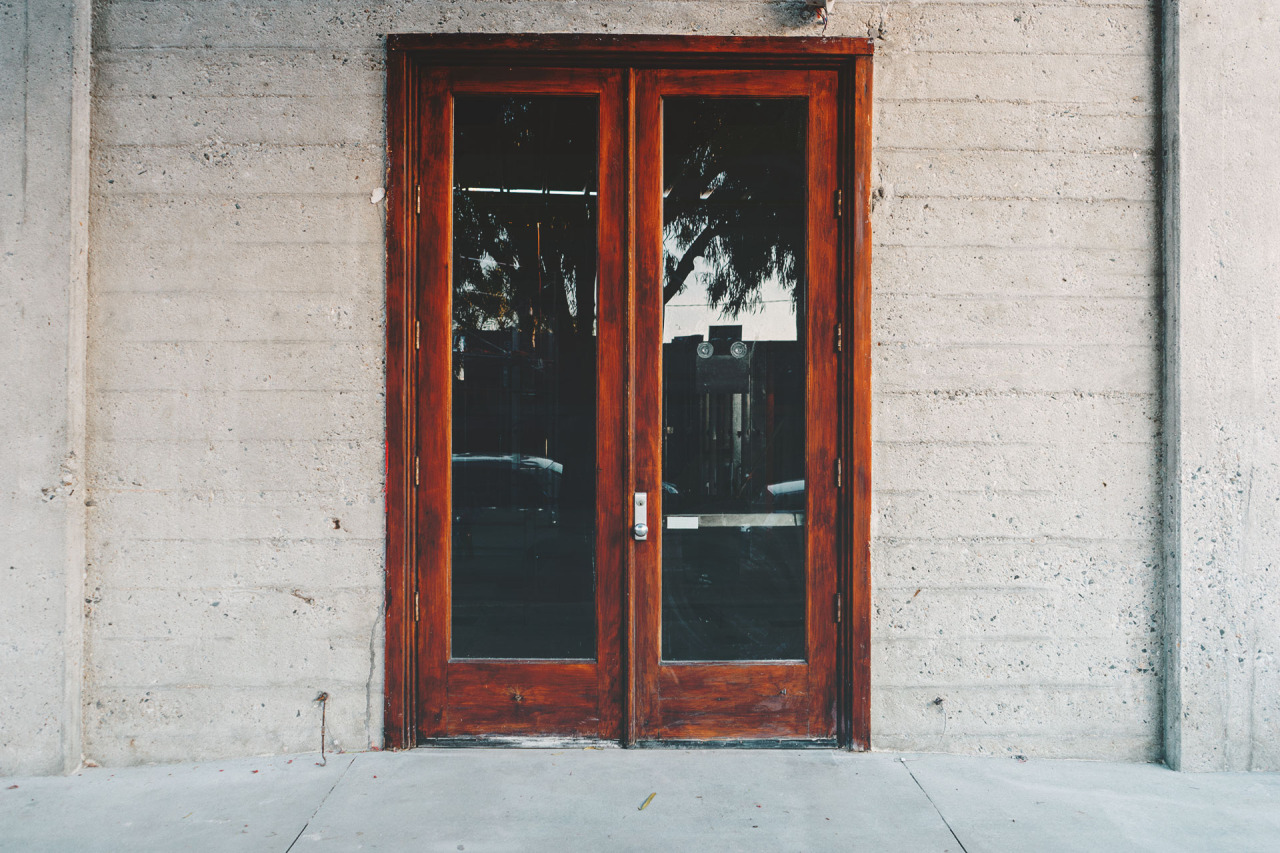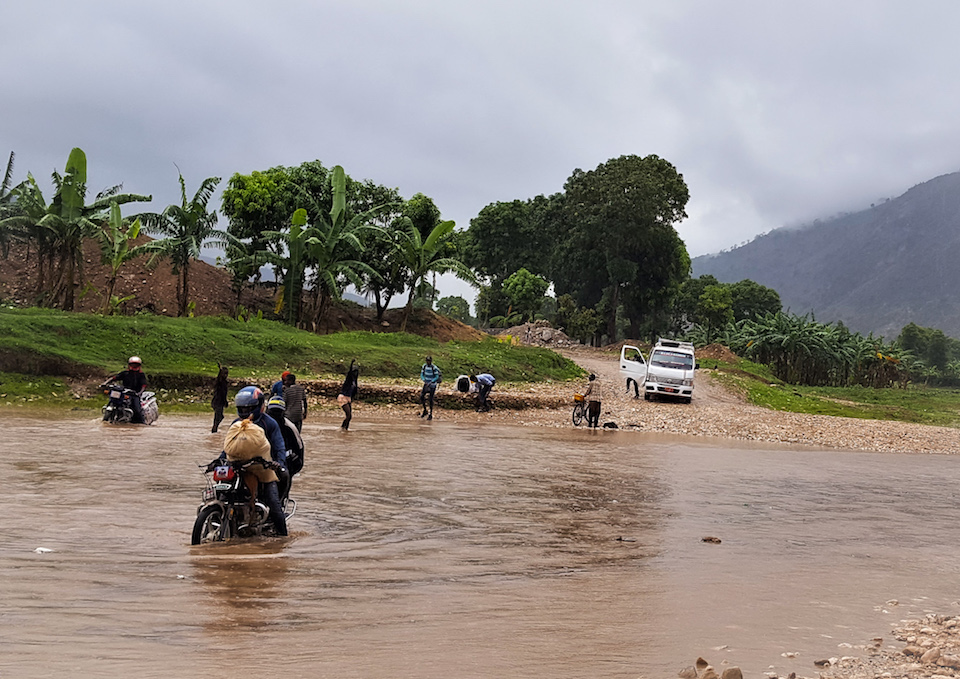Upon moving to New York, the newcomer is likely to hear how fortunate he is to see the city with “fresh eyes.” This sentiment has been lobbed my way a dozen times, at least, in the year since I moved here, the idea being that the New York neophyte has not become accustomed to all the wonders the city displays and sequesters. Maybe this is true —- I do often walk the streets with wide-eyed wonder, and I do go to far-flung neighborhoods just to experience them for the first time. And yet, everywhere I go in this city, I’m confronted by the old. I look at the tenements in the Lower East Side or the brownstones in Brooklyn and wonder, sometimes aloud, What used to be there? Who has lived and died between those walls? I feel a minor tug of envy for the people who have been here for longer than I have; they have seen the metamorphosis of the city, if only a little. We each build our own topographies of New York, and those who have been here the longest have the most nuanced map. They’ve seen the dry cleaner become a deli become a Starbucks in their old neighborhoods, and they can point to some of the buildings I wonder about and say, This is where I learned to play accordion, or That is where my ex-girlfriend lived, or Here is where I had my first New York broken heart.
I began constructing my own private New York in 2006, my sophomore year of college, when I visited a long-distance girlfriend who was studying acting at N.Y.U. We had begun dating during my senior year in high school, in North Texas, and resolved to try to make it work after she moved to New York and I to Austin. I landed at Laguardia on a blustery winter’s day, and, knowing nothing about the buses and subways, opted for a cab ride into the city. I couldn’t tell you the exact route I traveled—only that the cabbie and I crossed above the East River (on the Queensboro Bridge?) and headed south, for the East Village, and my girlfriend’s dorm room. I remember seeing two Yankee Stadiums out the window—Yankee Stadia—the new one deep into its construction, the old one, next to it, like a jealous brother. They were identical except for their coloration -— through the window, it looked as if someone had spliced together now-and-then images of the stadium. The new structure, ironically, appeared as Yankee Stadium must have to all who visited it in, say, 1927, but of course the old crumbling one was The House That Ruth Built.
The other thing that struck me on that virgin cab ride was the sheer density of the buildings in Manhattan. My God, I thought, so this is what is meant by “metropolis.” Human beings seemed inconsequential by comparison. Then, the first tower I recognized -— the Chrysler Building. In some movie, however many years ago, I must have seen it; I must have been entranced by its art deco spire, glowing futuristically. It is still my favorite skyscraper in the city.
I got my heart broken for the first time later that year, on my second trip to New York. The long-distance thing: it just wasn’t working out. If at all possible, I suggest never getting dumped in a foreign place; the unfamiliarity compounds your isolation and your feeling of powerlessness. On a hard park bench in Union Square, I had my first dose of New York-tinged existential reckoning, and cried my first New York tears. The city seemed to promise so much, and yet what use was that to me, who now had no reason to be there? New York’s teeming vitality was like a cruel joke, living proof that my life wasn’t here, and her’s was, and that’s why I was now alone.
If New York is a naked city, it’s only because our daily lives play out in the spaces between the city’s wardrobe changes, which can take years to notice. The city is really a palimpsest, continually erasing and rewriting itself. Its structure is in a continuous process of accumulation, its streets and parks and buildings layered repositories of social, economic, cultural and architectural histories. It is forced to evolve in this way by virtue of it being an island, the limits of its expansion circumscribed by nature. (Although, increasingly, the outer boroughs are taking on a Manhattanite striation, particularly Brooklyn—the artist communes of Bushwick and Red Hook call to mind the Greenwich Village of the 1960s, and it’s now as expensive to live along the water in Williamsburg as it is to rent in the East Village). Every person has his or her own New York, and the years claim competing histories of the city, too. The collective memory of a place and time resides in the place itself. You could pick any avenue in the city and write a history of New York based solely on the changes to that street.
But there are places where artifacts of older New Yorks wormhole into the latest version—emblems of the past not gerrymandered into the present. I was thinking about this on a recent trip to the Lower East Side Tenement Museum. Located at 97 Orchard Street, the museum is a 150-year-old, five-story tenement building that has been restored to late 19th and early 20th century conditions. The Italianate-style brick structure was built in 1863, and from then until 1935, when the apartments were condemned, it housed an estimated 7,000 people, reflecting two waves of immigrants into the volatile neighborhood: first, Germans and, later, Jews.
The basement level was a commercial space that similarly reflected the metamorphosing neighborhood around it, at least until the Lower East Side Tenement Museum company became involved in 1988. It began as a German saloon, when the neighborhood was known as Kleindeutschland, and there were approximately 700 bars in the area. Over the years, it was, variously: a kosher deli, one of thirty on Orchard Street alone at the turn-on-the-century; an auction hall, in the 1930s; and a discount undergarment shop in the 1970s, when the Lower East Side was rife with hosiery and undergarment shops. The museum, which faithfully recreates the saloon, the auction hall, and a half-dozen of the upstairs apartments, stands as a time capsule of several periods of New York’s history that overlap in space, if not in time.
The city’s churches remind me of bygone New Yorks, as well. It is impossible to stand in the plaza outside of St. Mark’s Church-in-the-Bowery, for example, and not feel ontologically disjointed from the bars and restaurants on Third Avenue, and yet the church and the avenue share a street corner. How many thousands of businesses have been just around the corner from St. Mark’s? And before that, how many homes? If some dead figure from the 19th century could be transported to the present, would they still see the neighborhood they once knew, behind the latest one? Perhaps they lived above where that Asian restaurant now stands. And would St. Mark’s be the catalyst for remembering? The church was consecretated in 1799; Peter Stuyvesant, the last Dutch governor of New Amsterdam, is buried in a vault under the chapel, and has been through the American Revolution, the Civil War, both World Wars, and the collapse of the World Trade Center.
The subway system, however, is perhaps the richest repository of New York’s collective memory. It is the city’s great democratizer, bringing all people to its level, and transporting those people to all points. And, obviously, it cannot be so easily redacted. New York’s tunnels and bridges are calendars of loss and change, ironically because they are so permanent. The elevated lines are mostly gone, but with only a few exceptions, stations that are no longer used are not demolished. Instead they remain intact, sealed-off ghost chambers in which it’s not hard to picture thousands of long-dead New Yorkers rushing for work or home or some appointment.
You can actually pass through some of these: the abandoned South Ferry station is now used as a turning loop for the 1 train and the 5 train, when it terminates at Bowling Green on evenings and weekends. (Or, was, before Hurricane Sandy -— it remains closed.) My favorite one, though, is the old City Hall station, which opened on October 27, 1904 and closed on December 31, 1945 because of low ridership, an unsafe curved platform, and proximity to the much more popular Brooklyn Bridge station. It was the southern terminus for the first line of the subway system, the Interborough Rapid Transit Company’s “Manhattan Main Line,” better known today as the Lexington Avenue Line. Architecturally, the City Hall station is beautiful, with colored glass tile-work, skylights, Roman brick, arches and brass chandeliers. It’s funny that such an elegant design and construction was implemented on a station that was little-used from the beginning.
The old City Hall station is now the turning loop for the 6 train, and recently I stayed on the train to make the turn. As the train departed the Brooklyn Bridge-City Hall station, I felt that frisson that comes when you break the rules and get away with it. The track is severely curved and short, to the extent that when the train used to stop there, passengers in the last couple of cars would not be able disembark. The train screams like a ghost around the turn, and suddenly the mezzanine of the old station appears, like some secret knowledge, its mouth still rimmed with dimly-glowing light bulbs, its bronchial passageways diverging to who knows where. Some sealed-off staircase beneath the street. As I exited the train on its first “official” stop, back on the uptown track at Brooklyn Bridge-City Hall, a middle-aged woman gave me a funny look, as if to say, Where did you come from?
New York continues to perpetuate the palimpsestic process of destructive revival, of course. Down the street from my apartment in Bedford-Stuyvesant, a long-abandoned corner bodega was recently converted into a Dunkin Donuts. It’s an uncomfortable intrusion into the neighborhood, but it’s surely predictive of similar development—according to the Center for Urban Research at City University of New York, the Bedford subsection of Bedford-Stuyvesant has had the greatest white population increase of any neighborhood citywide over the last ten years. In 2006 an Applebee’s in the renovated Restoration Plaza became the first nationally-branded sit-down restaurant in Bedford-Stuyvesant in over thirty years. Now there is a McDonald’s down the street, surrounded on both sides by doubles shops, a common street food in Trinidad and Tobago, and the Dunkin’ Donuts. Not to mention the legion of coffee shops, craft beer bars and gourmet restaurants that have opened in the area in the last couple of years.
Eventually, I’ll move, and my motley New York will bloom out in a new direction. When I revisit this first apartment, I wonder what the neighborhood will look like?
—
Phillip Pantuso has written for The New York Times, Bedford+Bowery, Esquire.com, Paste, and BKYLNR. He lives in Brooklyn.
—
Featured Image photograph by E.B. Bartels, www.ebbartels.com.




